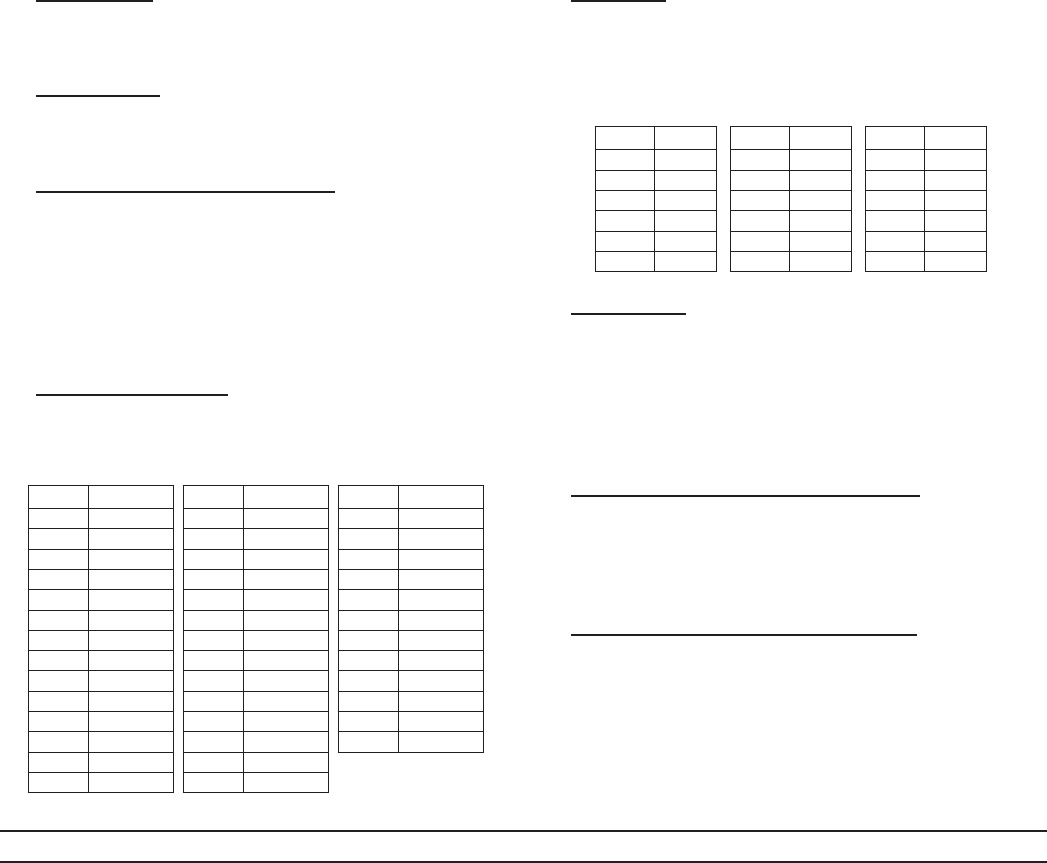
Page 18 For technical questions, please call 1-800-444-3353. Item 42708
• Section width- This number gives the width of the
tire in inches. The larger the number, the wider the
tire. (The markings on the example tire diagram
show 4.80. The markings on your tire may differ.)
• Inner diameter- This number gives the inner diameter
of the tire in inches. This is also the rim diameter in
inches. (The markings on the example tire diagram
show 12. The markings on your tire may differ.)
• U.S. DOT tire identication number- This begins with the
letters “DOT” and indicates that the tire meets all federal
standards. The next two numbers or letters are the plant
code where it was manufactured, and the last four numbers
represent the week and year that the tire was built. For
example, the numbers 2107 mean the 21st week of 2007.
Any other numbers used are marketing codes used at
the manufacturer’s discretion. This information is used
to contact consumers if a tire defect requires a recall.
• Maximum Load Rating- This number
indicates the maximum load in kilograms and
pounds that can be carried by the tire.
Code Pounds
71 761
72 783
73 805
74 827
75 853
76 882
77 908
78 937
79 963
80 992
81 1,019
82 1,047
83 1,074
84 1,102
Code Pounds
85 1,135
86 1,168
87 1,201
88 1,235
89 1,279
90 1,323
91 1,356
92 1,389
93 1,433
94 1,477
95 1,521
96 1,565
97 1,609
98 1,653
Code Pounds
99 1,709
100 1,764
101 1,819
102 1,874
103 1,929
104 1,984
105 2,039
106 2,094
107 2,149
108 2,205
109 2,271
110 2,337
Load Index Rating Codes
• Load index- This is a measurement of how much weight
each tire can support. See chart above. (The markings
on the example tire diagram show 71. The markings
on your tire may differ.) Note: You may not nd this
information on all tires because it is not required by law.
•
Code MPH
F 50
G 56
J 62
K 68
L 75
M 81
Code MPH
N 87
P 94
Q 100
R 106
S 112
T 118
Code MPH
U 124
H 130
V 149
Z 149
W 168
Y 186
Tire Speed Rating Codes
Speed Rating- The speed rating denotes the speed at
which a tire is designed to be driven for extended periods of
time. This does not indicate that the vehicle or rims can
safely reach or maintain that speed. These ratings are
listed to the right. (The markings on the example tire
diagram show M. The markings on your tire may differ.)
Note: You may not nd this information on all tires because
it is not required by law.
• Tire Ply Composition and Materials Used- The
number of plies indicates the number of layers of rubber-
coated fabric in the tire. In general, the greater the
number of plies, the more weight a tire can support. Tire
manufacturers also must indicate the materials in the
tire, which include steel, nylon, polyester, and others.
• Maximum Permissible Ination Pressure- This number
is the greatest amount of air pressure that should ever
be put in the tire under normal driving conditions.
BEARING PACKING INSTRUCTIONS
Important
Read and adhere to the following instructions; failure to read and obey all
of the following instructions COMPLETELY will void the warranty and can result
in damage to the trailer, property damage, or SERIOUS PERSONAL INJURY.
Whenever a hub is disassembled (if a hub on a new unit requires assembly or a hub is
disassembled for maintenance), the following procedure MUST be followed.
1. Using a suitable solvent, thoroughly
clean the bearings and the rest of the
parts in the Hub assembly of all grease,
dirt, metal shavings, or any other foreign
object. The parts must be cleaned
even if they are new or clean.
2. Allow all pieces to dry completely.
3. Make sure that your hands are thoroughly
clean and the bearing packer (not
included) is also thoroughly clean.
4. Place fresh, clean bearing
grease in the packer.
5. With the grease-lled bearing packer in
one hand and the bearing in the other,
press the bearing into the grease, forcing
the grease inside the slots in the bearing,
continue doing this until every slot in the
bearing is completely full of grease.
6. Finish assembling the hub/wheel
assembly as explained in the manual,
being careful not to get any dirt or
debris on any part of the assembly.


















